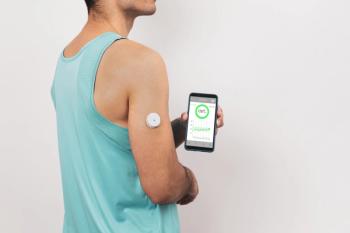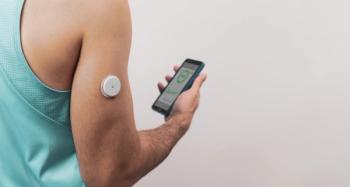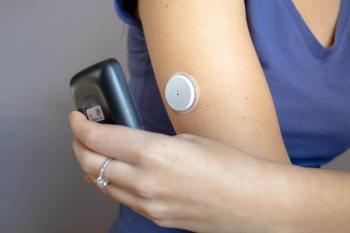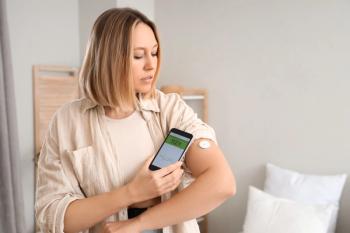
Reproducibility of Consecutive CGM Results in Cystic Fibrosis-Related Diabetes
Researchers assessed the reproducibility of at-home CGM acquisitions with mixed meal tolerance tests among patients with CF-related diabetes who were not treated with insulin.
Among patients with cystic fibrosis-related diabetes (CFRD) who are not treated with insulin, repeated in-home continuous glucose monitoring (CGM) acquisitions may have reasonable reproducibility, according to study results published in the Journal of Clinical & Translational Endocrinology.1
Diabetes is a relatively common extrapulmonary complication of cystic fibrosis (CF), affecting nearly 20% of young and 40-50% of adult populations with CF. Annual glucose tolerance testing (OGTT) is currently recommended for all patients with CF who are older than 10 years; however, with a factors such as the 2-hour time commitment adherence, to recommended OGTT is poor. Additionally, OGTT has also been associated with a low reproducibility, with repeated testing often having differing values and diagnoses. Because of the lack of an identified threshold at which CFRD should be diagnosed and treated with insulin, implanting CGM for CFRD screening has been challenging.
To use CGM as a viable clinical tool for this patient population, similar repeated CGM acquisitions with consistent results are needed. To assess this, and the current lack of confidence in the diagnostic threshold for these patients, a team of investigators conducted a descriptive study in which they performed 2 “consecutive at-home CGM acquisitions with mixed meal tolerance tests in non-insulin treated adolescents and adults with CF.”
A total of 20 patients (ages 14-50 years) with CF who were not treated with insulin or antihyperglycemic medications were recruited between April and December 2021 from the LeRoy W. Matthews CF Center at the University Hospitals Rainbow Babies and Children’s Hospital in Cleveland, OH. Patients with an adhesive allergy, a low carbohydrate diet, those who were pregnant or had a recent hospitalization, a pulmonary exacerbation, or used glucocorticoids within the past month were excluded from the study. Due to COVID-19 pandemic-associated limitations, the study activities were all performed virtually.
Patients wore a blinded CGM device for 2 separate 14-day periods with 1 to 3 weeks off between each CGM wear period. Patients were asked to keep a 3-day dietary log during days 2 to 4 of each 14-day wear period and were asked to perform a fasting mixed meal tolerance test (MMTT) on day 5. Patients fasted without food or drink for 8 hours prior to and 3 hours after ingestion of Boost High Protein Vanilla, which was the product of choice due to its higher protein content and risk reduction for post-prandial hypoglycemia.
“Glycemic data from CGM 1 and CGM 2 were compared regarding published thresholds to define abnormality: percent time >140 mg/dL of ≥4.5%, percent time >140 mg/dL of >17.5%, and percent time >180 mg/dL of >3.4%,” the authors noted. The peak and 2-hour glucose thresholds for the repeat MMTT were then compared.
A total of 20 participants completed the study (14 male; median age, 25.5 years). All participants had at least 1 copy of a severe loss of function CFTR variant (class 1 or 2) and all but 1 patient were pancreas exocrine insufficient. In addition, all patients were diagnosed with CF either in infancy or early childhood.
Of the cohort, 5 patients had conflicting results between CGM 1 and CGM 2 for percent time >140 mg/dL of ≥4.5%. Only 1 patient had conflicting CGM 1 and CGM 2 for percent time >140 mg/dL of >17.5%, and percent time >180 mg/dL of >3.4%. Across all participants, the average glucose levels for GCM 1 and 2 were 100.2 mg/dL (standard deviation [SD], 13.6) and 100.7 mg/dL (SD, 13.7), respectively. The mean of individual differences between CGM 1 and CGM 2 was 0.55 mg/dL (SD, 8.43; P = .77).
Of the cohort, 17 participants completed the 2 MMTTs at home; the 3 individuals who did not record any time of Boost ingestion were not included in the assessment. Not many participants had a 2-hour glucose >140 mg/dL. “Peak glucose >140 mg/dL, 180 mg/dL, and 200 mg/dL were more common, with 10–37% of participants demonstrating disagreement between CGM 1 and CGM 2,” the authors noted.
“Though prior studies have examined the feasibility of in-home OGTT and found good acceptability by participants, ours is also the first study to explore CGM for glycemic screening solely in the home environment,” wrote the investigators.
However, some study limitations included the small sample size, a lack of enrichment in patients who had more severe glycemia, and no definitive guidelines established for abnormal CGM. In addition, because the study was conducted in an at-home setting, investigators relied on patient self-reported fasting and Boost ingestion meal logs.
“Future studies should evaluate with higher rates of dysglycemia,” the researchers added. “This will hopefully provide the additional data to inform CGM thresholds for CFRD screening and clinical practice guidelines.”
Reference
1. Kutney K, Kaminski BA, Casey T, O’Riordan M, Gubitosi-Klug R. Reproducibility of in-home CFRD screening using continuous glucose monitoring and mixed meal tolerance test. J Clin Transl Endocrinol. Published online August 25, 2023. doi:10.1016/j.jcte.2023.100323
Newsletter
Pharmacy practice is always changing. Stay ahead of the curve with the Drug Topics newsletter and get the latest drug information, industry trends, and patient care tips.















































































































